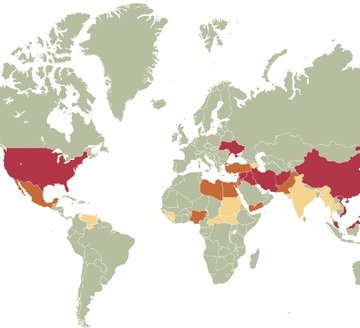- About
- Topics
- Picks
- Audio
- Story
- In-Depth
- Opinion
- News
- Donate
-
Signup for our newsletterOur Editors' Best Picks.Send
Read, Debate: Engage.
So New Year’s celebrations have been and gone, and it’s back to work. Unless of course, you live in one of 10 regions highlighted by Foreign Policy magazine in their article “10 Wars to Watch in 2015”.
Describing ongoing conflicts in 10 of the world’s most volatile regions, the article highlights how there is a new kind of unpredictability to the world’s conflicts- but there is cause to be positive; conflicts may be more unpredictable than before, but there is also a new complexity to the world’s politics i.e. there is no overarching, ideological battle being conducted (think of the Cold War), meaning individual conflicts can be settled on their own terms.
Bearing that in mind, where are some of the world’s most significant and challenging conflicts, and what makes them so?
In Syria and Iraq, the multiple interests of ISIS, the Assad regime, rebel fighters and US-led international forces makes this conflict particularly unstable- with US air strikes on ISIS seeming to benefit Assad and hinder rebel fighters. It seems like a lose-lose situation, which is why the eventuality of a future peace agreement must be assured throughout.
The conflict in Nigeria on the other hand, has a distinctively economic dimension to it; the government is in a position to learn from its mistakes of extrajudicial killings when handling Boko Haram fighters, however, with a drop in crude oil prices, it is seriously hindered in terms of its budget. Furthermore, with elections looming, the present regime must do all it can to appear in position to tackle terrorism- and it needs economics in its favour to appear strong.
The article also highlights situations in Ukraine, South Sudan, Somalia, the Democratic Republic of Congo, Afghanistan, Yemen, Libya and the Sahel, and surprisingly, Venezuela- it is well worth the read to get an overview of ongoing conflicts and potential outcomes in 2015.
